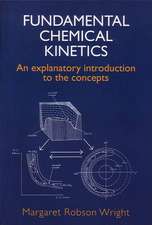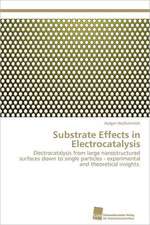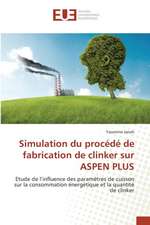Spectrometry of Fuels
Autor R. A. Friedelen Limba Engleză Paperback – 20 mai 2012
Preț: 642.83 lei
Preț vechi: 756.27 lei
-15% Nou
Puncte Express: 964
Preț estimativ în valută:
123.02€ • 127.71$ • 102.58£
123.02€ • 127.71$ • 102.58£
Carte tipărită la comandă
Livrare economică 22 martie-05 aprilie
Preluare comenzi: 021 569.72.76
Specificații
ISBN-13: 9781468481235
ISBN-10: 1468481231
Pagini: 364
Ilustrații: XVI, 344 p. 22 illus.
Dimensiuni: 152 x 229 x 19 mm
Greutate: 0.49 kg
Ediția:1970
Editura: Springer Us
Colecția Springer
Locul publicării:New York, NY, United States
ISBN-10: 1468481231
Pagini: 364
Ilustrații: XVI, 344 p. 22 illus.
Dimensiuni: 152 x 229 x 19 mm
Greutate: 0.49 kg
Ediția:1970
Editura: Springer Us
Colecția Springer
Locul publicării:New York, NY, United States
Public țintă
ResearchCuprins
1 High-Resolution Mass-Spectrometric Investigation of Coal Derivatives.- Experimental Procedure.- Results and Discussion.- Conclusions.- References.- 2 Field-Ionization Mass Spectra—Structure Correlation for Paraffins.- Discussion of Tables and Figures.- Experimental.- References.- 3 The Analysis of Coal with the Laser Mass Spectrometer.- Coals Used.- Laser Heating.- Obtaining the Spectra.- The Spectra.- Conclusions.- References.- 4 Spectra of Coals and Coal Extracts: Ultraviolet-Visible Spectra of Carbon Disulfide Extracts.- Experimental.- Results.- Discussion.- References.- 5 Spectrometry of Chars—Structure Studies.- Spectrometric Methods.- Similar Hydrogenation Reactions of Sucrose and Coal.- Coal-like Chars.- Conclusions.- References.- 6 Spectra of Coals and Coal Extracts: Proton Magnetic Resonance Spectra of Pyridine and Carbon Disulfide Extracts.- Experimental.- Results and Discussion.- References.- 7 13C NMR Chemical Shifts in Selected Hydroaromatic and Aromatic Hydrocarbons.- Experimental.- Spectral Results.- Substituent Effects on Carbon Shieldings.- Spectra-Structure Correlation.- References.- 8 The Potential of 13C NMR in Coal Research.- Experimental.- Results and Discussion.- Conclusions.- References.- 9 Spin-Echo Nuclear Magnetic Resonance Studies of Fast Chemical Reactions.- References.- 10 Nuclear Magnetic Resonance Studies of Hydrogen Bonding.- Benzenethiol Complexes.- Amine Complexes.- Water Complexes.- Chloroform Complexes.- Purine and Pyrimidine Complexes.- Self-Association Interactions.- Ternary Complex Involving Metal Binding and Hydrogen Bonding.- ?-Diketone Complexes.- References.- 11 Nuclear Quadrupole Resonance Spectroscopy and Its Application to Chemistry.- Theory of NQR.- Instrumentation.- Application of NQR Spectroscopy to Chemistry.-Summary.- References.- 12 Mössbauer Spectroscopy: Principle and Practice.- Theory.- Experimental.- References.- 13 Double-Resonance-Modulated Microwave Spectroscopy.- Qualitative Theoretical Considerations.- Experimental.- Discussion.- Conclusions.- References.- 14 Electron Spin Resonance Studies of Petroleum Asphaltics.- Nature of Free Radical.- Vanadium Unpaired Spin.- Nitrogen Superhyperfine Splittings (shf).- Models for Nonporphyrin Vanadium.- References.- 15 Some Spectral Observations on Coking Lignites.- Results.- Discussion.- References.- 16 Infrared Interferometry—Emission Spectra in the Middle-Infrared Region.- Experimental.- Data Reduction.- Results and Discussion.- Summary.- References.- 17 Aromatic-Ring-Proton Determination by Infrared-Intensity Measurement in the 1650–2000-Wavenumber Region.- Experimental.- Results.- Discussion.- References.- 18 Characterization of Carbonate Minerals in Oil Shales and Coals by Infrared Spectroscopy.- Theoretical Aspects of Carbonate Spectra.- Experimental.- Results and Discussion.- References.- 19 The Use of Infrared Spectroscopy to Study Surface Groups and Adsorbed Species on Catalysts.- Surface Groups on Silica-Alumina.- Surface Acid Sites.- Effect of Water on Surface Acidity.- Surface Acidity Model.- Summary.- References.- 20 Self-Association of Phenol in Nonpolar Solvents.- Theoretical.- Experimental.- Results.- Discussion.- References.- 21 Infrared Pseudo Matrix Isolation: A Catalog of Spectra for Chemical Analysis.- Data Handling.- Structure of the Data File.- Applications of the Data File.- Summary.- References.- Appendix—Catalog of Spectra.- 22 ATR-Pyrolysis Spectra of Coal.- Experimental.- Results.- 23 Application of Luminescence Spectrometry to the Analysis of Fuels.- Experimental.- Discussion of Results.-Summary.- References.


























